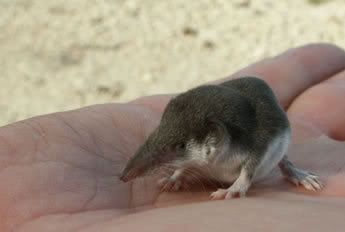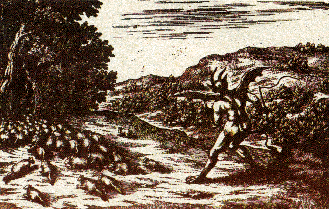
Biologically, Europe is a much-scoured continent. New discoveries and exciting finds in the Natural World happen in far away, dank places, like the jungles of New Guinea or the forests of South America. Until last week however, when a new creature was discovered on our continent. Not a small insect or rare deep-sea fish, Europe has a new species of mammal - the Cypriot Mouse. Scientists had pretty much thought every mammal here had been found already, as naturalists had researched and catalogued every corner of the continent - so to find something new as large as a mouse was a remarkable discovery. Mus cypriacus has bigger eyes, ears and teeth that it's relatives - but at the end of the day it's still a small, grey mouse, albeit apparently goofy-looking. Telling them apart from regular small grey mice is somewhat difficult, but it's great that we've got another mammal in our extended family.
There's some discussion as to how many species of mammals we have in Europe - Wikipedia lists 120, I've read figures as high as 230. At any rate, we've got one more now - and all those 'Mammals of Great Britain and Europe' guidebooks are out of date again (unless you just write +1 next to a photo of a house mouse). The problem are introduced species, and whether they qualify or not. Is the Red-necked Wallaby a European Mammal? No, of course not - although if you visit the island of Inchconnachan in Loch Lomond you'll find a colony of them happily hopping around. In 1975 two breeding pairs were released there from Whipsnade Zoo, and their relatives were born in the wild on this continent. You'd certainly not expect to find wild Marsupials over here - but there are other visitors that get marooned here too.
The moth-eating Hoary Bat (Lasiurus cinereus) - is found mainly in Canada, where it migrates south as far as Bermuda, but is sometimes recorded in ports of the European Arctic Circle as it has the unfortunate habit of roosting in shipping crates. Most European bats (there are at least 33 species) are Evening - or Vesper - bats. Almost all are insect eaters, except for some that catch fish and the Nyctalus (Noctule Bats) which have been known to eat birds. The extremely rare Spanish Greater Noctule Bat (Nyctalus lasiopterus), is the largest bat in Europe with a wingspan of up to 46cm. It has been known to catch and eat birds on the wing. Studies in Spain indicated that during the nocturnal migration of birds over the Mediterranean, as much of 70% of Greater Noctule droppings contained their remains.
Slovenian etching of the Devil shepherding dormice

The Edible Dormouse (Glis glis) is notorious for being the snack of choice for Roman Legionnaires. They were kept and raised in large pits or terracotta containers to be fattened up (their other name is the Fat Dormouse). They were either glazed with honey or stuffed with mince, peppers and nuts. In Italy they are still known as Ghiro, as they sleep for 20hrs each day. Found all over continental Europe, they are still considered a delicacy in Slovenia. An old Slovenian myth from the 17th Century has the devil appearing in forests herding dormice, making an eerie whistling sound (later found to be Owls hooting), and apparently Dormouse hunting is still part of Slovenian national identity. The only UK Dormouse population is found just outside Luton.
Europe has seven native species of Seal - Common, Grey, Ringed, Harp, Bearded, Hooded, and Mediterrenean Monk. Most of these are found in Northern Scandinavia, where their territory overlaps with that of the Walrus - which has been known to eat seals when no other food can be found. The Common Seal is - as you'd expect - the most numerous seal in the Northern Hemisphere, with a population of half a million (it's also known as the Harbour Seal in North America). But another species of seal trumps it in the global populations stakes. The Crabeater Seal is the second most numerous large mammal on Earth, as there are over 25 million of them encircling the Antarctic. The population biomass of Crabeaters is over four times that of all other seals put together. And they don't actually eat crabs.
The European Rabbit (Oryctolagus cuniculus) is one of the continent's most common mammals, with a population in the many millions. Often classed as vermin because of the damage they do, it's odd to think of a rabbit as being critically endangered. You have to go out of Europe to find them though, to two remote islands south of Japan called Amami Oshima and Toku-no-shima. Here is the only place on Earth you'll find the Amami Rabbit, a small, dark bunny with tiny ears, short legs and clawed feet. Living in forests, it is the only remnant of a pan-Asian group that was out-competed by other rodents, and is now confined to these two small islands near Okinawa. Sadly locals introduced and released Mongooses to help rid the island of poisonous snakes, but they developed a taste for these highly timid rabbits instead. Critically endangered, they are now protected. It's not just birds of paradise and Blue Whales that need our help, rabbits and mice can be threatened too...
New species of mouse found in Europe
List of European Mammals
The bat that eats birds
The Amami Rabbit
The Slovenian Cult of the Doormouse